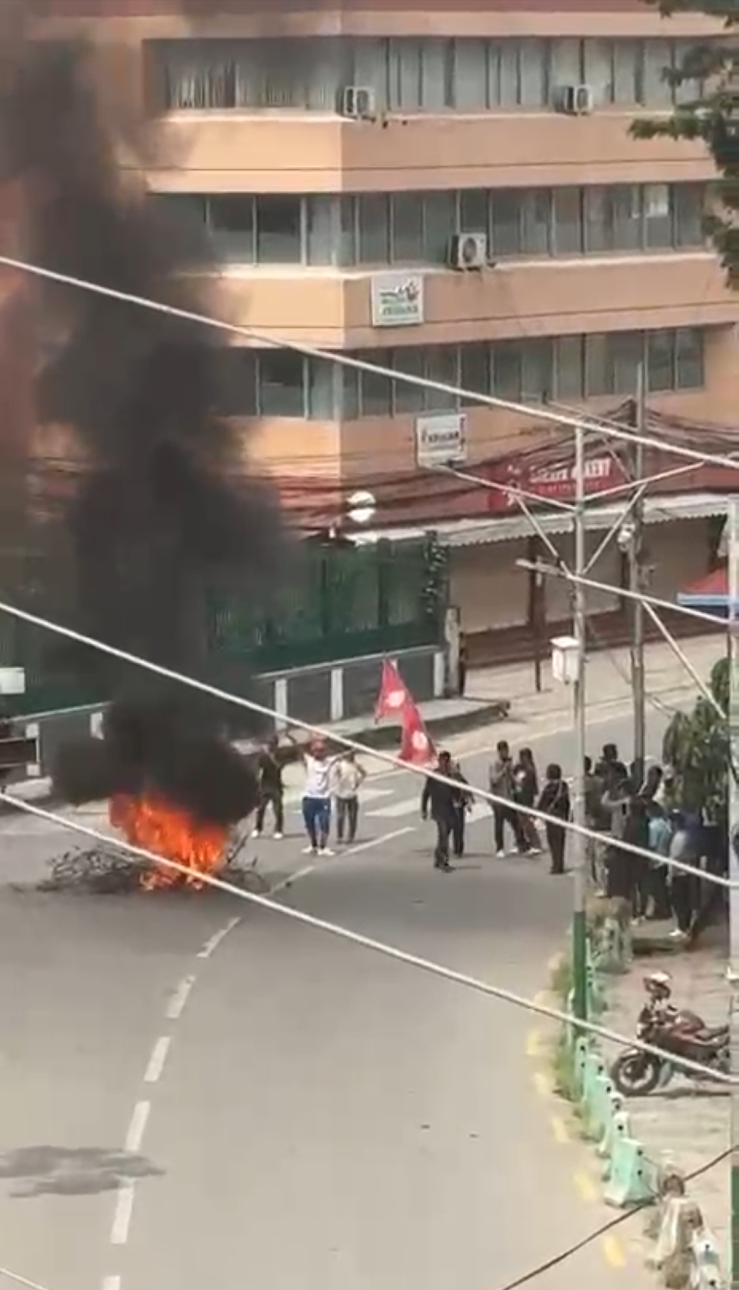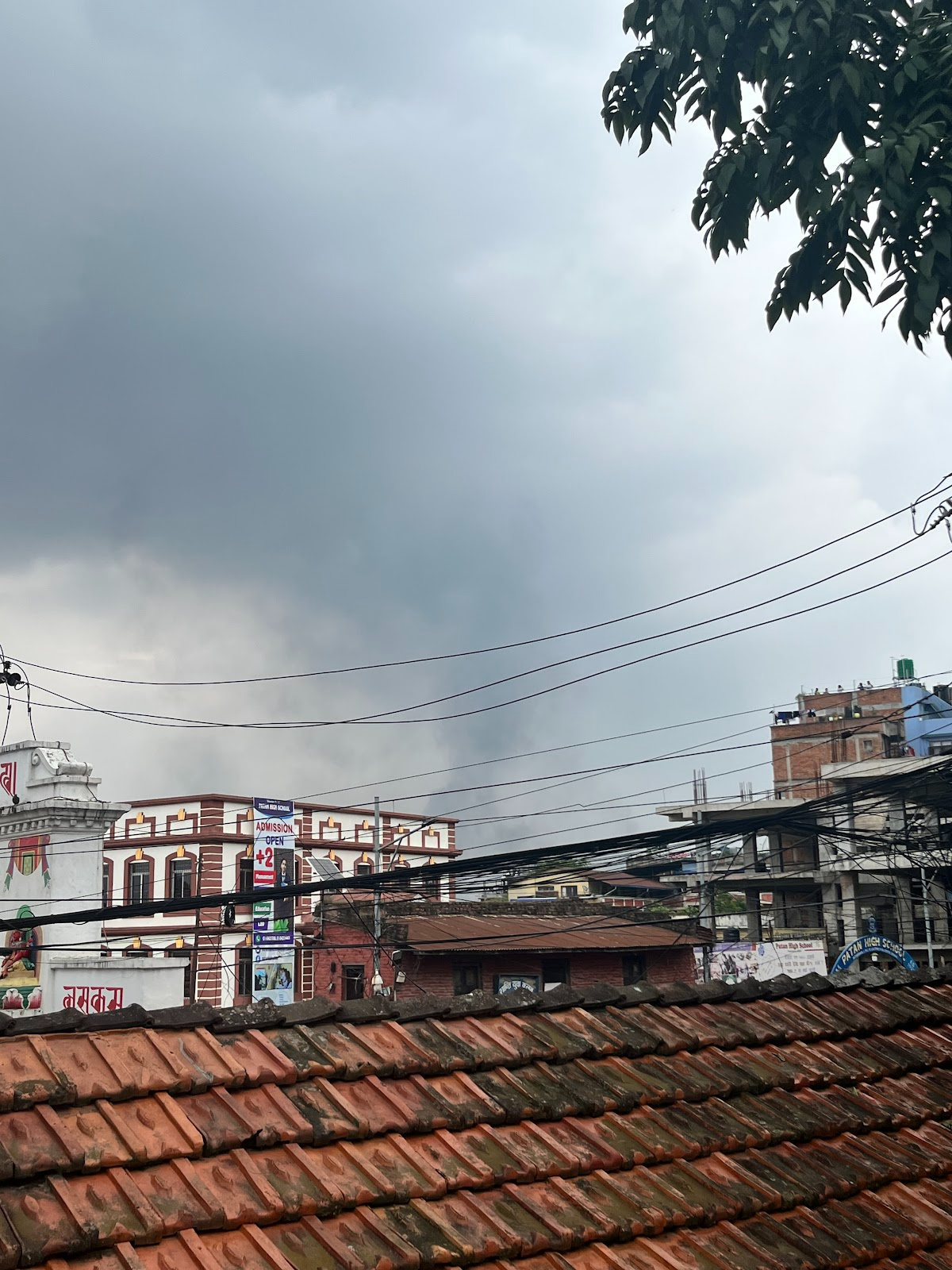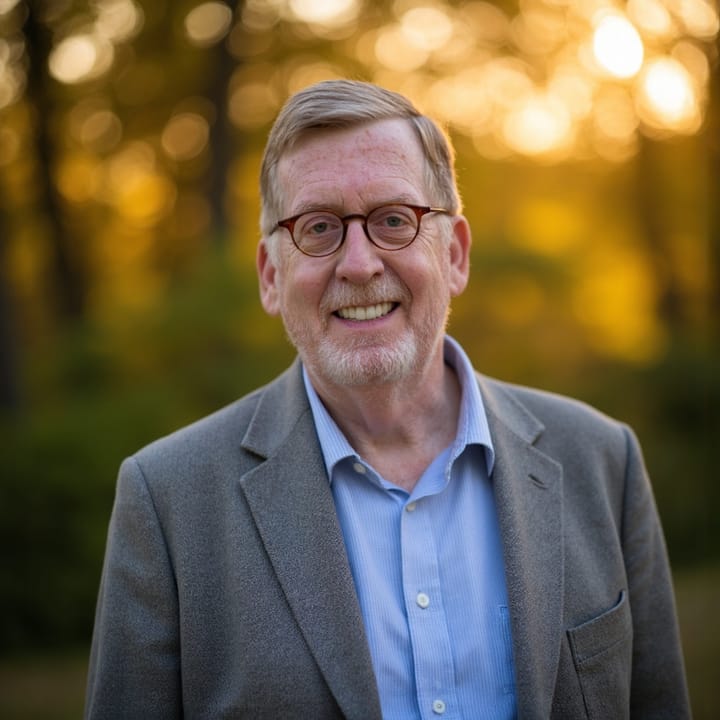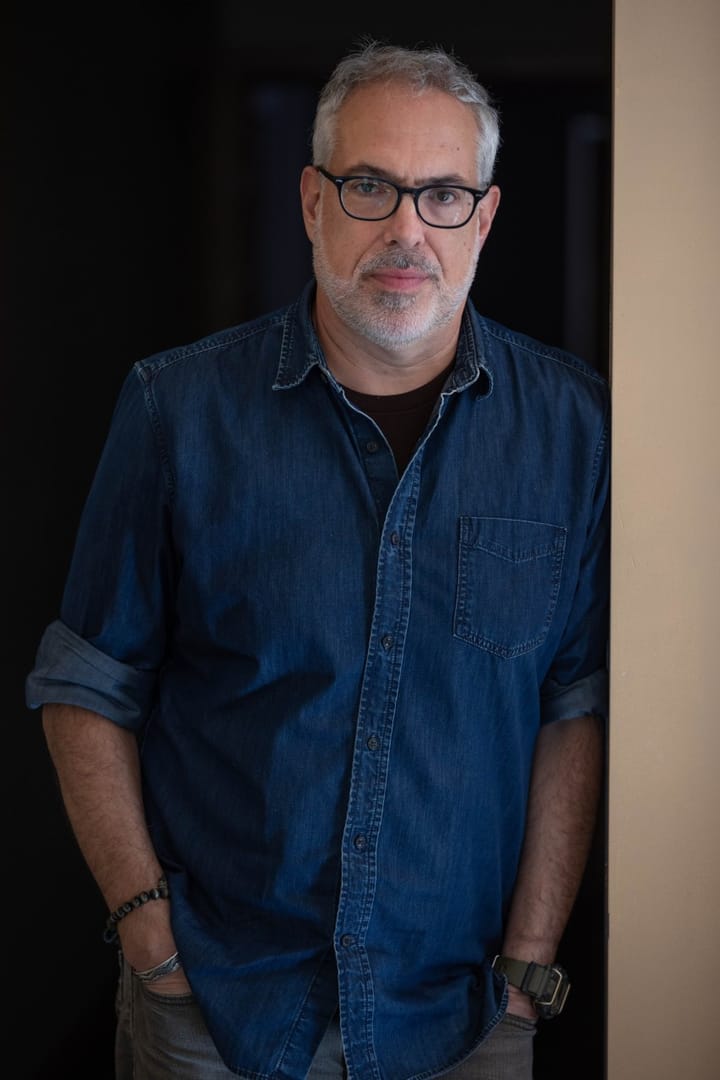Uprising in Nepal: The City of Wood Is Burning
Staff Writer Jackson Hersom ’27 shares his personal experience attending protests in Nepal as a study abroad student and explains how a government social media ban triggered such widespread demonstrations.

The day started out seemingly normal for Kathmandu, Nepal. Motorbikes cruised by students as they made their way to school, markets littered sidewalks with fresh produce, and my home-stay burrow of Patan remained colored by offerings and the smoky smell of incense from the past weekend’s Indra Jatra festival. It was just a few days since my study abroad group had landed in Kathmandu to study local human rights affairs, and already we had found ourselves immersed in the beauty of Nepali culture: visiting Hindu-Buddhist temples; eating various renditions of the national dish, Dal Bhat; and lounging at a local jazz bar.
Unlike other days, however, my host mother insisted on walking me to my classroom. An unresolved tension was in the air. Just the day before, at least 19 students and children had been killed at the hands of Nepali police for holding a demonstration at the Nepali Parliament, and, over the course of 24 hours, the Nepali government had dissolved at the retaliatory arson and escalations of an outraged uprising.
Western media sources have claimed the Gen Z-led protest was inspired by a recent social media ban by the Nepali government, but the actual demands of Nepali youth go further back. In reality, the social media ban was a tipping point within a generational struggle against institutional corruption.

On Sept. 4, the Nepali government blocked access to 26 social media platforms because they failed to meet licensing requirements introduced in 2023. Many of the banned platforms — including Facebook, Instagram, and WhatsApp — were hosts for various discussions regarding corruption, government, and organizing by young Nepalis. A majority of Nepali youth responded online with accusations of corruption and institutional censorship.
The “corruption” Gen Z spoke of had been an issue long before Sept. 4 — whether that be the nepotism maintained by a hegemony within the political elite, the secretive use of taxpayer money, the delay of local healthcare services to indigenous communities, or the convention of bribes used by the richest minorities of Kathmandu to impose policy decisions — among an increasingly large list of other institutional injustices.
Hami Nepal is a nonprofit organization that was one of the main groups involved in organizing the protest. Recently, Hami Nepal’s anti-corruption focus evolved to include scrutinizing nepotism among the political elite and their children — what many organizers called “nepo babies.” Inspired by similar Western campaigns, some young Nepalis sought to call out the children of particularly corrupt parliament members, arguing that their luxury lifestyles can only be afforded with the money stolen from Nepali citizens. The plan for the demonstration was nonviolent: They would meet in Kathmandu, walk halfway to parliament, and demand an end to this corruption. But just as the online political discussion and calls for empowerment flourished, almost all social media services were banned.
Sept. 8 marked the first day of the protests. Before the first few revolutionaries even took to the street, their movement was the main talking point on the news, in local corner stores, and in the classroom. While peace was imperative for both sides, relations soured almost immediately. The police came to the protests equipped with water cannons, tear gas, and live ammunition. All the artillery would be used in succession throughout the day.
The following could be best described as a call and response of aggression — the police hosed down a few crowd members, the angered mass pushed back. The police threw tear gas onto the street, then cars were turned over and their windows smashed in by protestors. The utmost shock came when the police opened fire onto the crowd, aiming directly at the heads of various protestors. There was no warning shot, and many were too late to notice the danger until pools of blood were trickling out onto the street.
“That’s when destruction began,” said The Nepali Times’ Kunda Dixit. No longer was the movement only in response to the corruption of the government; it was now a matter of life and death. The next day would be retribution for all those killed at the hands of the state.
After being dropped off by my host mother, the previous tension gradually dissolved. The schedule would be as usual for my School for International Training (SIT) program — a lecture in the morning and a site visit to an LGBTQ+ rights organization in the afternoon. During lunch, I had the opportunity to step outside my classroom and take a breather after a long class discussion. I was barely paying attention, looking up at the sky, when a dark, thick cloud of ash began to block out the sun. Before I put two and two together, chanting rang out from down the street.

“हामी एकजुट छौं!” – “We are united!”
“अब तिमीले जानुपर्छ।!” – “Now you have to leave!”
“हामीलाई प्रधानमन्त्री चाहिँदैन!” – “We don’t need the prime minister right now!”
A bonfire blazed in the middle of the street. The crowd grew larger, and the chanting grew louder. The people were not there without reason. They stood in front of Patan Higher Secondary School, where a student was shot dead the day before.
Shop owners, nearby students, and local residents peered out their windows or stepped onto their porches to see the ongoing commotion. Slowly, the crowd grew larger and larger, the chants becoming increasingly invigorated. A Nepali friend translated the phrases in my ear as we saw the fires grow larger in front of us, the smoke now getting in our eyes. Young children emerged from the crowd to provide fuel to the flames, while some straggling protestors marched onwards to nearby government buildings. A writer from the The Nepali Times stood nearby, writing down notes on what was occurring in front of him.
Protests grew into similar areas — schools of the political martyrs, government buildings, homes of politicians and ministers. Streets erupted not just in Kathmandu, but in Pokhara, Janakpur, Gorkha, Chitwan, and several other areas. No longer were the movements solely led by the youth; everyone was getting involved.
The most symbolic act of Sept. 9 — in the eyes of the organizers and Nepali youth alike — was the burning of the parliament in the mid-afternoon. First, protestors broke through the police brigades set in front of parliament, then stormed the building. After vandalizing the inside rooms and outside architecture alike, the crowd set the premises ablaze. It symbolized the refusal of dependency of the Nepali people on their government and its system: They would not go the route of injustice and censorship.
As the day continued, Kathmandu’s sky became darker with the smoke from an increasing number of burned buildings. Government officials were dragged out of their homes and onto the streets. A Hilton Inn hotel, a staple of Kathmandu’s tourism economy, had its windows destroyed and its insides burned. Many youth within the movement went online to condemn any further arson or violence, warning that businesses or temples may be unintentionally destroyed.
By nighttime, the entire government went belly-up. The Prime Minister had resigned earlier that afternoon. Some ministers and politicians fled Kathmandu; others fled the country altogether. It was now on the youth to inherit an interim government and select their new prime minister. This task brought over 160,000+ people together in a group call on Discord, one of the few communication services that wasn’t blocked. Together, the participants published a 27-point manifesto titled, “What Comes After the Streets,” detailing their demands for a fair and equal government and election.
For the initiation of a six-month election cycle and temporary government cabinet, Nepali youth decided on a new prime minister — Sushila Karki, former Chief Justice of the Supreme Court of Nepal and the first female Prime Minister of Nepal. The Prime Minister herself said she supports the manifesto and has a long history of organizing for anti-corruption.
Some in Nepal have doubts about the new youth-inspired interim government. Professor and journalist CK Lal, for example, explained to me some concerns he had with the nationalist and Hindu-right leanings of the protests, in which some chants referred to pride of Gorkhali, or Nepali-Indian soldiers. Many also argued that the protest gave way for opportunist groups, such as the pro-monarchy royalists, to reestablish their regressive political goals during a time of instability.
The Nepali Times’ Dixit explained his perspective in a conversation we had: “The majority of the generation are just fed [up] with 30 years of corruption, with the musical chairs politics. Nationalism is just one part of it … But [the protestors] need to show that they’re there and that they’re in charge.”
With the days and weeks passing by since the uprising, Kathmandu and greater Nepal have returned to some level of apparent normalcy. Day-long curfews have finally been lifted, businesses have reopened, and schools have invited their students to return to classes. Buildings may still be burnt to the ground, and politicians may still be apprehensive to return to public light, but the attitude of many Nepalis remains hopeful and perseverant. That is the essential paradox of Nepali life — even in the moments of utmost horror and instability, the temples remain standing in their beauty, people continue drinking their usual morning milk tea, and normalcy finds a way to persevere.
A coordinator for my study abroad program taught me an applicable local saying — “Nepal doesn’t take steps forward, doesn’t take steps backwards, it just stays awkward.”






Comments ()